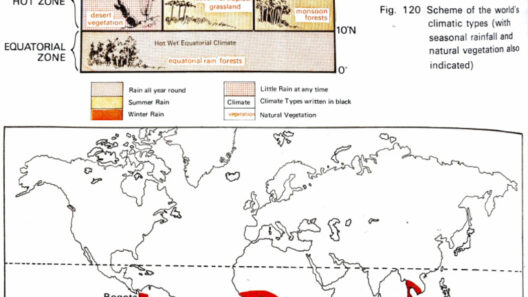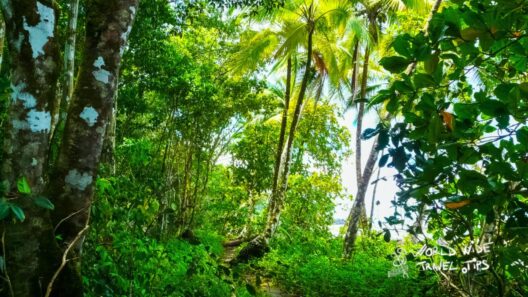The Dominican Republic, often celebrated for its breathtaking landscapes and sparkling turquoise waters, also boasts a climate that embodies the essence of a tropical paradise. This Caribbean nation is an enchanting blend of natural beauty, cultural richness, and climatic variability. Understanding its climate not only informs potential visitors but also highlights the nuances of tropical weather that contribute to the country’s allure.
Comprising two-thirds of the island of Hispaniola, which it shares with Haiti, the Dominican Republic presents a diverse climatic landscape influenced by various geographical factors. The nation experiences a tropical maritime climate, characterized by warmth and humidity throughout the year. However, several elements contribute to the climatic fluctuations observed across different regions.
The Dominican Republic exhibits two primary seasons: the dry season and the rainy season. The dry season usually spans from November to April, enhancing the appeal of the country as a tourist hotspot during these months. Travelers flock to its pristine beaches and lush mountain resorts, seeking refuge from the colder climates of the northern hemisphere. The average temperature during this period hovers around a delightful 77°F (25°C) to 82°F (28°C), making it an ideal setting for outdoor excursions and relaxation.
Conversely, the rainy season extends from May to October, bringing with it a shift in weather patterns. During these months, the islands experience increased precipitation, with September and October being notably wetter. Tourists may encounter brief, intense afternoon showers, typically giving way to sunshine soon after. This seasonal change plays a vital role in sustaining the verdant ecosystems that characterize the island, nourishing its lush vegetation and supporting its rich biodiversity.
However, the rain doesn’t diminish the allure of the Dominican Republic. In fact, the diverse climatic conditions contribute to various microclimates across the island, resulting in a spectrum of environments ranging from arid coastal regions to lush mountainous areas. The northern coast experiences more rainfall than the southern regions, while areas at higher elevations, such as the Central Mountains, can experience cooler temperatures. This climatic diversity fosters a myriad of flora and fauna, enriching the ecological tapestry of the nation.
One of the most compelling factors shaping the Dominican Republic’s climate is its susceptibility to tropical storms and hurricanes. The hurricane season, running from June to November, presents a significant risk to many Caribbean islands, and the Dominican Republic is no exception. During this period, the possibility of hurricanes and tropical storms can cause apprehension among residents and travelers alike. While hurricanes are relatively infrequent, when they do occur, their impact can be devastating, as witnessed during historic storms like Hurricane Maria in 2017.
Moreover, climate change is increasingly affecting the island, exacerbating the severity of weather phenomena. Rising sea levels and increasing water temperatures lead to more intense storms and unpredictable weather patterns. The repercussions strikingly extend beyond natural disasters, impacting agriculture, tourism, and water resources. The tourism industry, a vital economic component for the nation, relies heavily on stable climatic conditions; hence, the shifting climate poses a considerable threat to this essential sector.
Despite these challenges, the Dominican Republic’s climate continues to captivate and draw visitors. The enchanting beauty of its warm beaches, vibrant cities, and breathtaking mountain landscapes remains an eternal attraction. It invites contemplation on how such splendor can coexist with the vulnerabilities wrought by nature and human activity. The juxtaposition of tropical allure with environmental exigency evokes a deeper understanding and appreciation for the delicate balance of ecosystems.
Understanding the climate of the Dominican Republic enables one to partake in its magnificence responsibly. For instance, visitors planning to travel during the wet season may embrace activities that highlight natural splendor, such as exploring the country’s national parks or engaging in eco-tourism initiatives. Meanwhile, the dry season welcomes beach-goers and adventure seekers, offering ideal conditions for various recreational pursuits, including snorkeling, diving, and hiking.
Furthermore, awareness of local climate patterns encourages responsible tourism practices. As ecotourism gains momentum, travelers can contribute to conservation efforts and support local communities while enjoying the diverse offerings of the Dominican Republic. By recognizing their role in preserving the environment, travelers can ensure that future generations also revel in the island’s tropical splendor.
In conclusion, the climate of the Dominican Republic embodies more than just idyllic weather; it serves as a microcosm of the complexities surrounding tropical ecosystems. It invites introspection about the fragility of paradise in the face of climate change and humanity’s responsibilities. Those who seek to experience its charms are not only enticed by the allure of sun-soaked beaches and verdant landscapes but are also beckoned to consider the deeper implications of their interactions with this magnificent environment. This harmonization of fascination and responsibility serves as a reminder that while paradise exists, it is also vulnerable and deserving of our stewardship.








